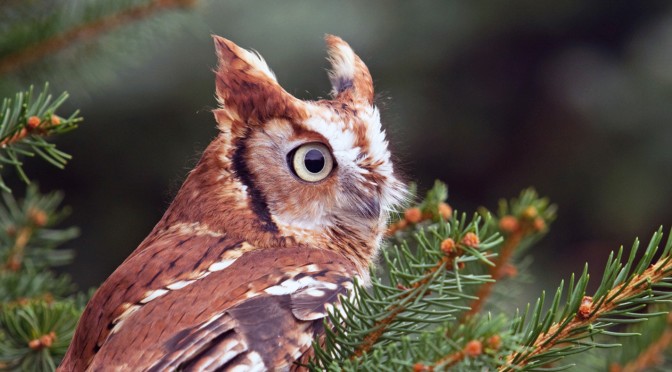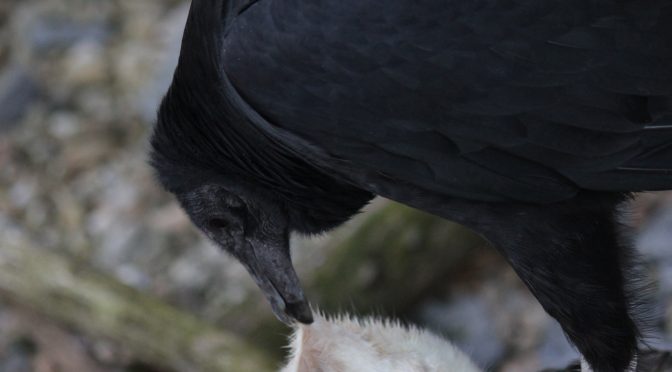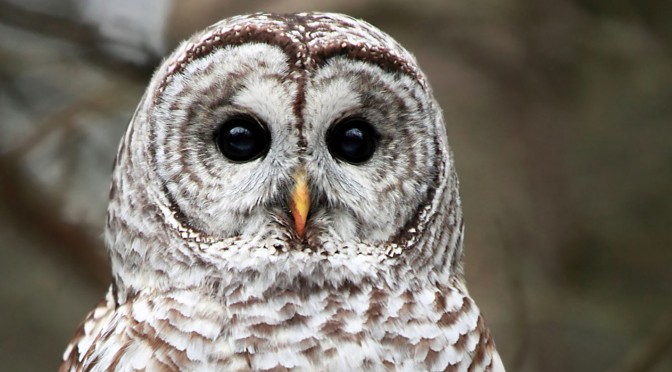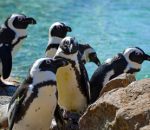General Information
The Eastern screech owl is an average sized bird with a 19-24 inch wingspan. As is common with many birds of prey, the females of this species tend to be larger than the males. They can be either gray or rufous (a red/brown coloration), with darker streaking of color covering the body. Eastern screech owls also have feathered tufts on their heads and feathered feet as well. They are carnivores that prey on small mammals, reptiles, amphibians, and even smaller birds.
Breeding season occurs in late winter early spring. Females lay clutches of 2-6 eggs, which will incubate for about 26 days. Chicks will fledge – i.e. leave the nest and start to fly – after about four weeks, but will remain dependent on their parents for food for another five to six weeks. Maturity occurs around 1 year.
Diet
Eastern screech-owls in the wild have a greatly varied diet. They catch and eat most things smaller than them including insects, mammals, reptiles, and amphibians. These amazing little owls are even agile enough in flight to prey on finches, jays, and doves among other birds. When it comes to mammals, screech-owls frequently consume rats and mice as well as moles and rabbits.
Eastern screech owls are sit-and-wait hunters that swoop down silently on their next meal from low-lying branches. They usually hunt in the dim light of dusk and dawn or at night. If an eastern screech-owl catches more food than it can eat, it may cache excess food in tree cavities to save for other days when hunting isn’t as successful. After eating, screech owls (like other owls) expel small pellets of indigestible prey parts: bones, fur, feathers, and even teeth. The average screech owl regurgitates two to four pellets per day.
Habitat and Range
Due to their ability to easily adjust to many habitat types, the eastern screech owl has a large ecological niche. These small owls can be found all along the eastern part of North America from the bottom of Canada to the top of Mexico. They can readily adapt to living near humans in urban and suburban areas, although they prefer to be located in wooded regions.
Eastern screech-owls do not build nests and thus must find already made nest cavities to occupy. They will use anything from woodpecker holes to nest boxes meant for wood ducks and kestrels. Eastern screech-owls are not migratory birds.
Common Physical Features
Eastern screech owls are a smaller owl ranging in size from 6-10 inches and a wingspan of 19-24 inches. As is common with many birds of prey, the females of this species tend to be larger than the males. Eastern screech owls are a mix of white, gray, and reddish-brown—coloration that helps them blend into the branches and trees. Eastern screech owls have feathered tufts on their heads and feathered feet as well. Juveniles of the species closely resemble adults, but have ear tufts that are not fully developed and may also have light and dark barring on the head, mantle, and under parts.
In areas where both western and eastern screech owls are found, it is easiest to tell the two apart by sound. Also, the Eastern Screech-Owl is slightly smaller than the Western Screech-owl. The two most common calls of the eastern screech owl are the even-pitched trill and the descending whinny. Both of these calls can be heard at night as this animal is primarily a nocturnal hunter.
Adaptations: Eastern screech owls are ambush predators that swoop down silently on their next meal from low-lying branches. The soft edges on their serrated flying feathers help muffle the sound of their flapping wings, enabling them to sneak up on their prey silently. Most hunting is done during the first 4 hours after sunset.
These owls have symmetrical ears, which suggest that they hunt primarily using their vision. They do, however, have excellent hearing as they often capture prey hidden by leaf litter. Disc feathers around eyes serve as sound collectors. Wide set ear tufts, which are feathers and not the actual ears, can stand up totally when alert or lay flat against head to help funnel sounds into ear slits which are located on the sides of the head.
The Eastern screech owl’s yellow eyes are so large that they can’t move in their sockets. In order to look around, these owls have to turn their neck, which can rotate up to 270 degrees in either direction. They have excellent vision in both the light and dark.
Like other owls, the screech owl also has a strong curved beak and talons to help it catch its prey.
Behavior and Life Cycle
Once they’ve reached sexual maturity, Eastern screech-owls will select a mate and pair bond to that bird. Like many birds of prey, most eastern screech-owls mate for life after successful breeding. If breeding isn’t successful, however, the pair may switch and re-pair with other birds until they form a successful breeding pair.
Breeding occurs in late winter early spring.
To court a female, the male screech-owl will give a trill call while running up and down branches. Once mated, the female will select a nest location. Eastern screech owls don’t build a nest. Instead, thy will look for natural tree cavities or the abandoned nests of other animals. Females lay their eggs directly on the layer of fur and feathers left over from their previous meals that lines the bottom of their den.
Females lay clutches of 2-6 eggs in early spring and incubate the eggs for about 26 days. After hatching, chicks are covered in white down and their eyes are sealed shut. The female will brood them (i.e. keep them safe and warm) while the male provides food. Chicks will fledge – i.e. leave the nest and start to fly – after about 4 weeks, but will remain dependent on their parents for food for another 5-6 weeks. Chick will fully mature around 1 year of age.
Conservation Messaging
Together with Nature
Most of the Bird of Prey here at the zoo are all rehabilitated birds who have sustained different injuries deeming them unreleasable. These birds fall victim to debris found on the side of the road. If it’s an apple core, banana peel, or some discarded trash it will attract their prey items which will then attract the bird of prey. Birds of prey have tunnel vision when hunting and will often not see a car coming.
What can we do?: One simple way we can help is to dispose of all your trash properly, even natural items like apple cores and banana peels. Ecosystems have a natural balance so it’s important for us as humans to leave no trace! Once you leave nature, no one should know that you’ve been there. This means bringing out anything that you’ve brought in. Additionally, leaving the environment unaltered is equally important.
Never remove an animal from the wild! Some well-meaning people may think its a good idea to try and aid injured animals or relocate “pest” animals, but the truth is, trapping rarely ends well for wildlife and is not a long term solution.
While you might be thinking you are helping that animal, most people don’t realize the amount of care and time that goes in to caring for these animals, and removing them from their natural environment can be detrimental to the wild populations. If wild animals are not causing damage or posing danger, the best solution is to coexist! If you come across injured wildlife please call your local wildlife rehabilitation center as they are better equipped to handle and care for that animal.
Fun Facts
- The eggs generally hatch in the order they were laid, so that all the young are not born at the same time.
- Regurgitate pellets (castings) of feathers, bones and fur several hours after they’ve eaten. It’s believed that pellet formation and regurgitation are necessary for a bird’s good health.
- The screech owl is the most abundant and familiar of all North American owls, ranging throughout the United States and northern Mexico and are the smallest “eared” owls east of the Rocky Mountains.
Bibliography





